The Intel 6th Gen Skylake Review: Core i7-6700K and i5-6600K Tested
by Ian Cutress on August 5, 2015 8:00 AM ESTGenerational Tests on the i7-6700K: Legacy, Office and Web Benchmarks
Moving on to the generational tests, and similar to our last Broadwell review I want to dedicate a few pages to specifically looking at how stock speed processors perform as Intel has released each generation. For this each CPU is left at stock, DRAM set to DDR3-1600 (or DDR4-2133 for Skylake in DDR4 mode) and we run the full line of CPU tests at our disposal.
Legacy
Some users will notice that in our benchmark database Bench, we keep data on the CPUs we’ve tested back over a decade and the benchmarks we were running back then. For a few of these benchmarks, such as Cinebench R10, we do actually run these on the new CPUs as well, although for the sake of brevity and relevance we tend not to put this data in the review. Well here are a few of those numbers too.

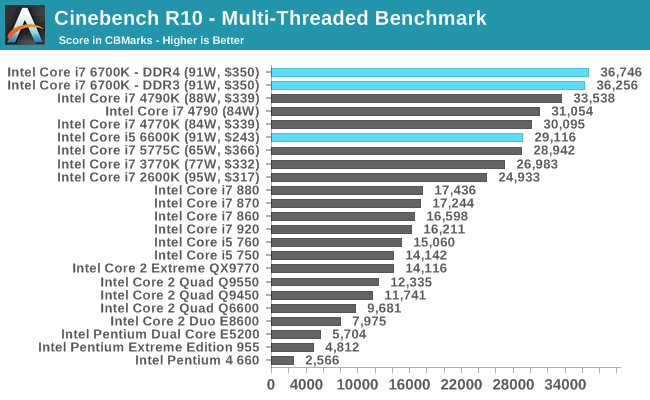


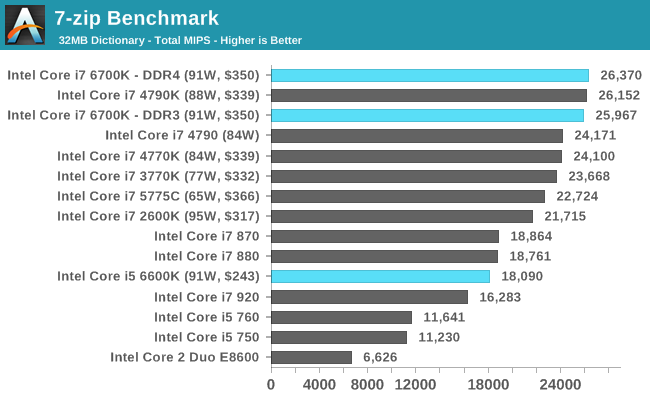
Even with the older tests that might not include any new instruction sets, the Skylake CPUs sit on top of the stack.
Office Performance
The dynamics of CPU Turbo modes, both Intel and AMD, can cause concern during environments with a variable threaded workload. There is also an added issue of the motherboard remaining consistent, depending on how the motherboard manufacturer wants to add in their own boosting technologies over the ones that Intel would prefer they used. In order to remain consistent, we implement an OS-level unique high performance mode on all the CPUs we test which should override any motherboard manufacturer performance mode.
Dolphin Benchmark: link
Many emulators are often bound by single thread CPU performance, and general reports tended to suggest that Haswell provided a significant boost to emulator performance. This benchmark runs a Wii program that raytraces a complex 3D scene inside the Dolphin Wii emulator. Performance on this benchmark is a good proxy of the speed of Dolphin CPU emulation, which is an intensive single core task using most aspects of a CPU. Results are given in minutes, where the Wii itself scores 17.53 minutes.
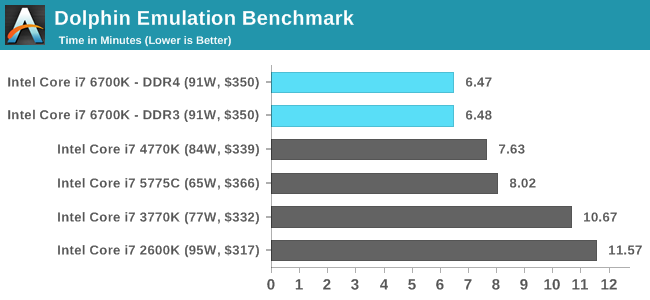
WinRAR 5.0.1: link
Our WinRAR test from 2013 is updated to the latest version of WinRAR at the start of 2014. We compress a set of 2867 files across 320 folders totalling 1.52 GB in size – 95% of these files are small typical website files, and the rest (90% of the size) are small 30 second 720p videos.

3D Particle Movement
3DPM is a self-penned benchmark, taking basic 3D movement algorithms used in Brownian Motion simulations and testing them for speed. High floating point performance, MHz and IPC wins in the single thread version, whereas the multithread version has to handle the threads and loves more cores.
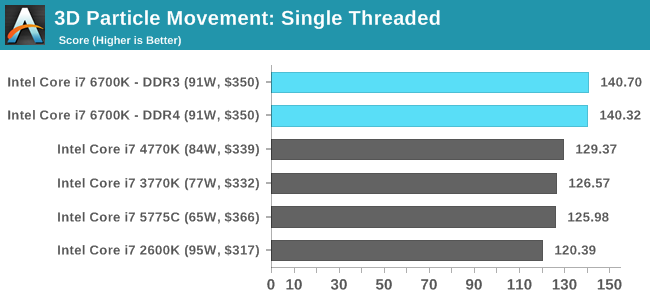
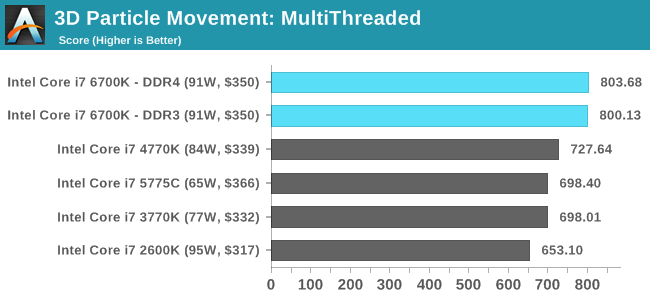
FastStone Image Viewer 4.9
FastStone is the program I use to perform quick or bulk actions on images, such as resizing, adjusting for color and cropping. In our test we take a series of 170 images in various sizes and formats and convert them all into 640x480 .gif files, maintaining the aspect ratio. FastStone does not use multithreading for this test, and results are given in seconds.
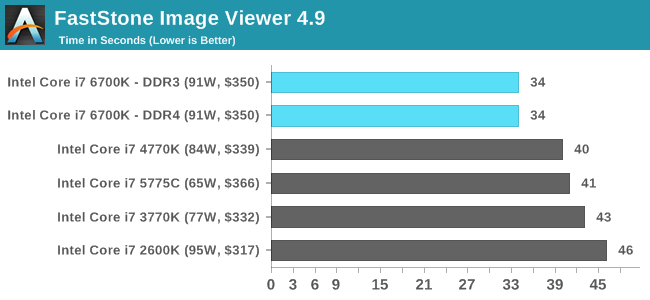
Web Benchmarks
On the lower end processors, general usability is a big factor of experience, especially as we move into the HTML5 era of web browsing. For our web benchmarks, we take four well known tests with Chrome 35 as a consistent browser.
Sunspider 1.0.2
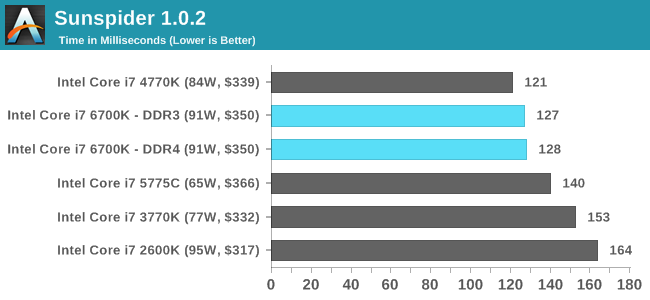
Mozilla Kraken 1.1
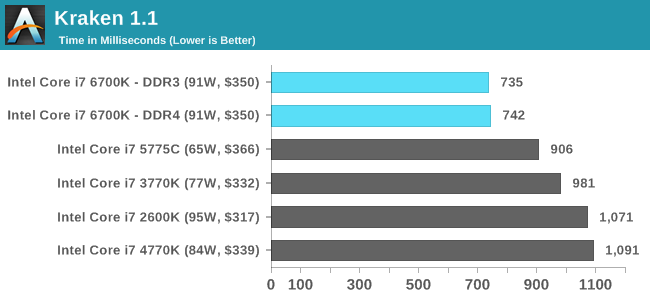
WebXPRT
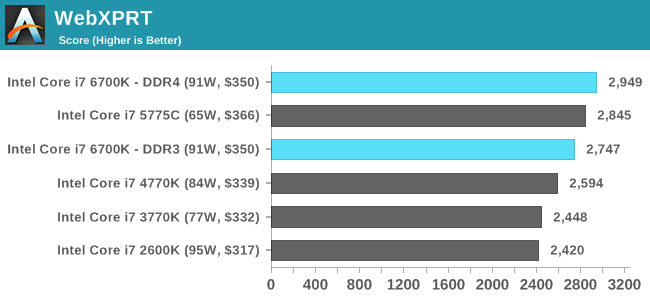
Google Octane v2
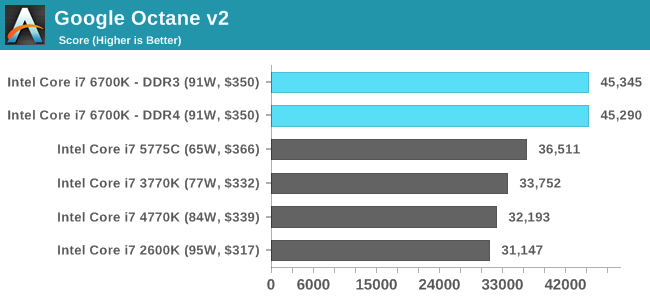










477 Comments
View All Comments
watzupken - Friday, September 4, 2015 - link
To be honest, I feel the recent AMD chips are not so bad. From my opinion it boils down to 2 things,1) They are not able to get software makers to optimize for their chips,
2) Disadvantage in terms of fab, i.e. 28nm vs 20/14nm.
Of course, they also don't have a pocket a deep as Intel to begin with. So any misstep can have a serious setback for them.
i_will_eat_you - Saturday, December 12, 2015 - link
AMD is long dead especially for the desktop market and server market. For their latest highend chips they simply slap bigger and bigger fans/heat sinks on to deal with a higher TDP from a ramped up clock. I'm not even sure if they have a particularly good standing in the "APU" market, low end market, etc. ARM and Intel are doing much better.They only have a slight gain in the GPU market with the push of HBM but even this does not give them a strong lead and they are falling onto Apple like marketing in attempt to boast their sales.
The only reason people might tolerate AMD at the moment is because a lot of tasks will run ok on a CPU that is not the best or not the best value for money.
Until they release a new architecture and a new fabrication process they are becoming completely out of the game. I agree they have no room for error in that.
Synomenon - Monday, August 24, 2015 - link
So it's possible to have the full 16 PCIe 3.0 lanes from the CPU going to the GPU and have 4 PCIe 3.0 lanes from the chipset going to the m.2 drive on a Z170 board?wyssin - Sunday, August 30, 2015 - link
Here's what I'm talking about.In their i7-6700K review article, bit-tech.net compared chips at stock settings AND at a decent overclock. By seeing both of those results, you can see whether an upgrade makes sense for your needs (assuming you are an overclocker).
http://www.bit-tech.net/hardware/2015/08/05/intel-...
oranos - Tuesday, September 15, 2015 - link
Looks like after 5 years, there is still no reason to upgrade a 2500k.sheeple - Thursday, October 15, 2015 - link
I TOTALLY agree with yousheeple - Thursday, October 15, 2015 - link
THIS is funny, I'm using a SUPER OOOOOOLD L5408 Xeon that sips 40 watts and gives the performance of a 4th. gen i3 and runs ALL the latest 2015 games and the L5408 cost me 40 bucks on ebay, HAHAHAHAHAAAAA!!!!sheeple - Thursday, October 15, 2015 - link
My L5408 isn't even overclocked past 2.76 Ghz and runs The Witcher 3 Wild Hunt (game from 2015 on a machine with a cpu and mobo that together cost me 70 bucks used-the cpu was introduced in beginning of 2008) at 30 fps AVERAGE WITH ALL SETTINGS MAXED @ 1080p using a STOCK GTX 950 LOL!!! Whoever buys one of these "Skynet" Cpu's needs to do more research, SERIOUSLY !!!!sheeple - Thursday, October 15, 2015 - link
DON'T BE STUPID SHEEPLE!!! NEW DOES NOT ALWAYS = BETTER!manolaren - Saturday, October 31, 2015 - link
So if Anandtech tests are accurate, between the skylake cpu's, i5 is the way for a gaming pc. Gaming benchmarks are almost identical, but the price is a lot cheaper for the i5. Considering skylake doesn't bring nothing groundbreaking for the genre, then i cant see any other way for gamer's. My only question is if future games will take advantage of more than 4 cores and make i7 cpu's a must.